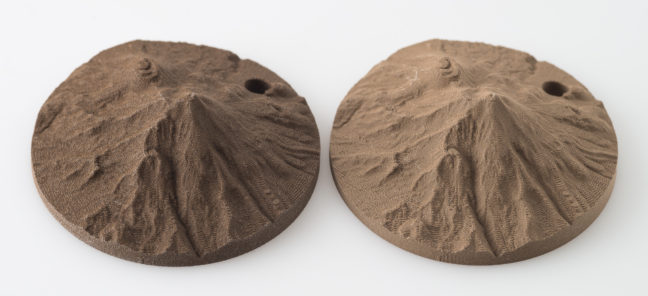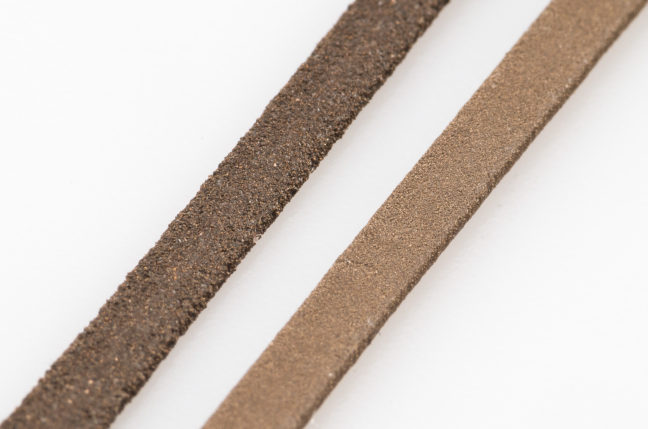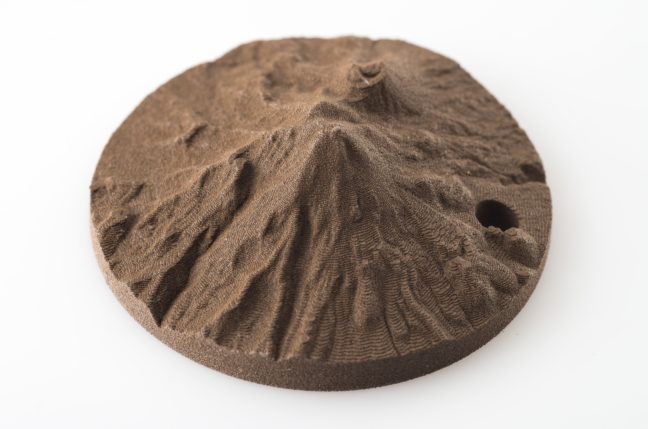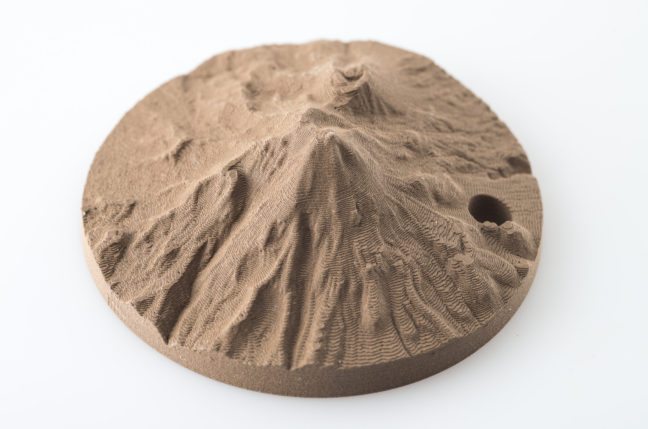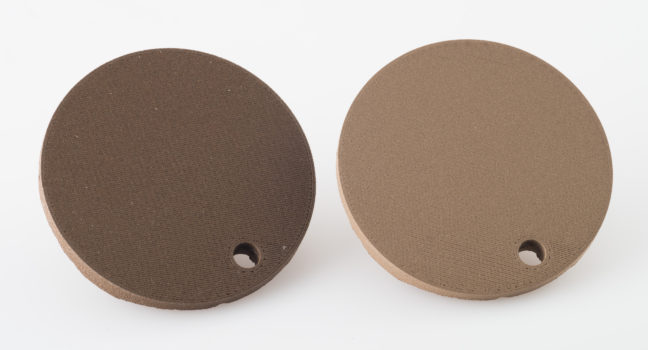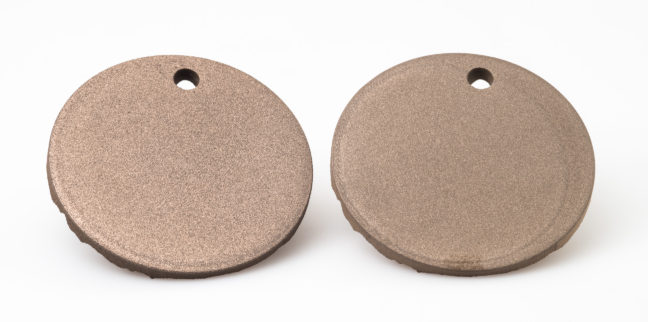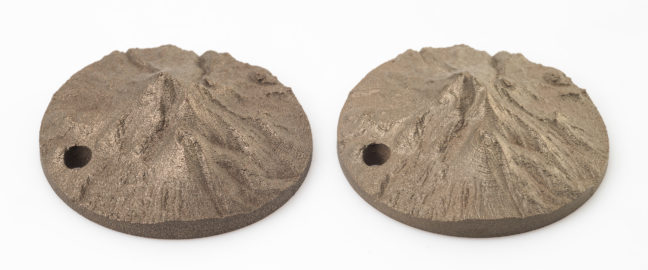Some initial impressions of Filamet bronze PLA and how it compares to Colorfabb bronzefill.
Filaments
This is a picture of the nozzle wipes from the start of each print (about 1.75mm across and 0.5mm thick). The darker brown filament on the left is Filamet, the lighter brown filament on the right Colorfabb. Filamet prints will continue to be on the left in the photos below. Both filaments seem to have similar amounts of bronze based on the density, but the bronze particles look larger in the Filamet filament.
Filamet Bronze PLA
- Published Density: 4.2 g/cm³
- Color: Dark Brown
- Measured Diameter: 1.73-1.76
Colorfabb Bronzefill
- Published Density: ~3.9 g/cm³
- Color: Light Brown
- Measured Diameter: 1.76-1.78
Solid bronze is between 7 to 9 g/cm3, and bronze powder varies from 2.5 to 5 g/cm³
Unpolished Prints
Both samples were printed at 210°C using a 0.33mm extrusion width, 0.1mm layer height, and 100% infill. Diameter was set to 1.77mm for Colorfabb and 1.73mm for Filamet, all other settings were the same.
Both filaments print very well with a 0.3mm nozzle. The only obvious difference between the two prints is the color, Colorfabb bronzefill is a lighter shade of brown, but both colors are nice. If you look closely, you may notice the Filamet has a slightly rougher texture, but they are very similar (both look a lot more like clay than metal). Both prints weighed 35 grams, which is heavy enough that they don’t feel like plastic, but neither are cold to the touch the way you’d expect from metal.
Filamet Bronze PLA
Colorfabb BronzeFill
Polished Prints
I polished the base of the prints with sandpaper. Despite starting off darker, the Filamet was noticeably more reflective which makes it look more metallic. The Filamet print also appears more grainy and is a bit warmer in color than the BronzeFill.
The rest of the print was polished using a brass brush. It’s hard to see the difference in the picture, so I’ll try to describe it. After brushing, the Filamet sample has a rough texture, very similar to cast aluminum. The reflections are brighter than the Colorfabb print, but the polished print is darker in color, giving the Filamet print more contrast. The Colorfabb sample is less grainy, the layer lines were less eroded by the brushing, but it also has a fine matte finish that makes it look less like bronze than the Filamet print. While I didn’t do any testing of strength or brittleness, the bronzefill print seemed more abrasion resistant, and I suspect may be stronger.
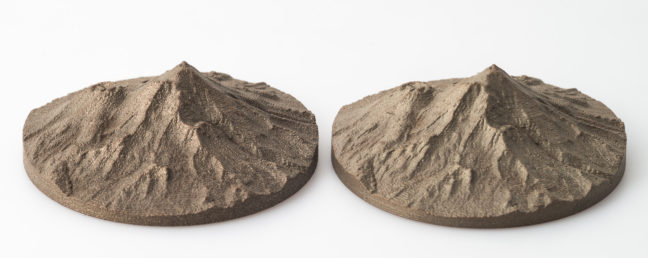 While the differences are fairly subtle, it’s enough to make a significant difference. I find the Filamet print to be more attractive and looks more like metal, at least with the way these two prints were processed. I had expected a much higher metal content from Filamet based on their kickstarter campaign, but they seem to have about the same amount of bronze. While I prefer the appearance of Filamet, it is also a lot more expensive than bronzefill so whether it’s worth the extra cost depends on what I’m using it for.
While the differences are fairly subtle, it’s enough to make a significant difference. I find the Filamet print to be more attractive and looks more like metal, at least with the way these two prints were processed. I had expected a much higher metal content from Filamet based on their kickstarter campaign, but they seem to have about the same amount of bronze. While I prefer the appearance of Filamet, it is also a lot more expensive than bronzefill so whether it’s worth the extra cost depends on what I’m using it for.
Sintering
Filamet comes with a powder and instructions for sintering the prints into solid metal if you have access to a kiln. I haven’t tried sintering with either filament.
Where to buy
- Virtual Foundry Filamet in copper, bronze, and eventually brass can be purchased from Amazon* or their website.
- Colorfabb BronzeFill*, CopperFill*, and BrassFill* can be purchased at most Colorfabb resellers.
- eSun also has a bronze filament*. While I haven’t used the eSun bronze filament, I’ve seen prints from it and found it very unattractive and not at all convincing as a metal infused filament (their aluminum and copper filaments are much nicer).
*affiliate links
